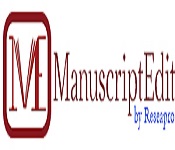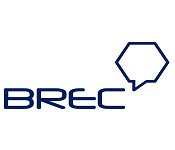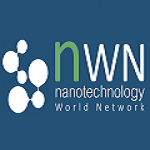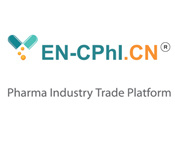Theme:
Pharma Nano 2018
Pharma Nano 2018-USA is a global annual event. This Pharma Nano 2018-USA brings together scientists, researchers, business development managers, CEOs, directors, IP Attorneys, Regulatory Officials and CROs from around the world. The passage of approval for Nano Medicine finds much requirement for discussion also focussing the latest developments in the field of Nano Medicine and Nanoparticles
Theme: Breakthroughs in Pharmaceutical Nanotechnology: Advancements and Challenges.
Track 1: Nanoparticles and Nanomedicine
Nanomedicine is a branch of medicine that applies the knowledge and tools of nanotechnology in the prevention and treatment of diseases. Nanomedicine involves the use of nanoscale materials, such as biocompatible nanoparticles and nano robots, for diagnosis, delivery, sensing or actuation purposes in a living organism. Nanoparticles from 1-100 nm have been widely used to improve the drug accumulation, internalization and therapeutic efficacy. The physicochemical and biological properties of the nanoparticles can also be finely adjusted by tailoring their chemical properties, sizes, shapes, structures, morphologies, and surface properties. Nanomedicine is the medical application of nanotechnology. Nanotechnology has provided the possibility of delivering drugs to specific cells using nanoparticles. Current problems for nanomedicine involve understanding the issues related to toxicity and environmental impact of nanoscale materials.
· Role in combination therapy
· Combination Therapy
· Regeneration
· Neurodegenerative diseases
· Anti-cancer therapy
· Role in inducing apoptosis
· Challenges of toxicity
Track 2: The Evolution of Nanomedicine with the Re-Evolution of Nanotechnology
Nanotechnology seems to have gained a widespread interest in the recent years. Nanotechnology has considerably accelerated the growth of regenerative medicine in the past few years. Application of nanotechnology in regenerative medicine has revolutionized the designing of grafts and scaffolds which has resulted in new grafts/scaffold systems having significantly enhanced cellular and tissue regenerative properties. Since the cell–cell and cell-matrix interaction in biological systems takes place at the nanoscale level, the application of nanotechnology gives an edge in modifying the cellular function and/or matrix function in a more desired way to mimic the native tissue/organ. Nanomedicine introduces nanotechnology concepts into medicine and thus joins two large cross disciplinary fields with an unprecedented societal and economical potential arising from the natural combination of specific achievements in the respective fields.
• Role in bone-degenerative diseases
• Sensory-neural therapies
• Antibacterial activity
• Cancer and chemotherapy
• Role in enhancing brain uptake
• Nanomedicine and COPD
• Parkinson Disease
• Role in vaccines
• Treatment of breast cancer
• Autoimmune diseases
• Atherosclerosis
Track 3: Computational Studies in Nanoparticles
The computational studies in nanoparticles have demonstrated that there has been considerable progress in nano- and biotechnology in the last several years. However, several key challenges have also become apparent, including the need for a better understanding of nanoparticle behaviour in vivo and the development of more effective nanoparticle therapeutics. Computational efforts are becoming an important tool in addressing both of these challenges, as well as in generally facilitating and accelerating nanotechnology-based translational research. The nanoinformatics has comes out as a new research area that covers raw data management, analysis of the data derived from biomedical applications and simulation of nanoparticle interactions with biological systems depicting the integration of biology, nanotechnology and informatics to form the basis for computational nanomedicine.
· Pathogenic studies
· Optical absorption
· Designing drugs or antibiotics
· Medical case reports
· Molecular binding properties
· Nanoparticles in mathematical modelling
· Nanoparticles and thermodynamic computations
· Imaging and nanoparticles
· Chemoinformatics
· Nanoparticles in pharmacokinetics model
· Quantum dots
Track 4: Toxicology of Nanoparticles
Nanotechnology is a rapidly growing field having potential applications in many areas. Nanoparticles have been studied for cell toxicity, immunotoxicity, and genotoxicity. Tetrazolium-based assays such as MTT, MTS, and WST-1 are used to determine cell viability. Different types of cell cultures, including cancer cell lines have been employed as in vitro toxicity models. Considering the potential applications of NPs in many fields and the growing apprehensions of FDA about the toxic potential of nanoproducts, it is the need of the hour to look for new internationally agreed free of bias toxicological models by focusing more on in vivo studies. The rapid expansion of nanotechnology promises to have great benefits for society, yet there is increasing concern that human and environmental exposure to engineered nanomaterials may result in significant adverse effects. The system was developed for nanotoxicity assessment at single and multiple cell levels which can measure and compare the microscopic and macroscopic effects of nanoparticles interaction with cells, without interference from neighbour ing cells' cues and also overall integrative effects produced by nanoparticles and cell–cell communication.
· Neonatal toxicity
· Mitochondrial injuries
· Cytotoxicity
· Toxicity to human lymphocytes
· Oral toxicity
· Toxicity due to inhalation of nanoparticles
Track 5: Emerging Nanomedicine
Currently, the treatment of HIV requires daily regular oral dosage of HIV drugs, and chronic oral dosing has significant complications that arise from the high pill burden experienced by many patients across populations with varying conditions leading to non-adherence to therapies. Recent evaluation of HIV patient groups have shown a willingness to switch to nanomedicine alternatives if benefits can be shown. Research efforts by the Liverpool team have focused on the development of new oral therapies, using Solid Drug Nanoparticle (SDN) technology which can improve drug absorption into the body, reducing both the dose and the cost per dose and enabling existing healthcare budgets to treat more patients.
In a four-year study conducted on the mouse model in advanced breast cancer metastasis in the eye's anterior chamber, the new nanoparticle not only killed tumour cells in the eye, but also extended the survival of experimental mice bearing 4T1 tumors, a cell line that is extremely difficult to kill. "Previous monotherapies have not extended the lifetimes of mice bearing this type of tumour".
Track 6: Smart Drug Delivery Technology
Some smart drug delivery platform is based on neutral phospholipid nanoliposomes. Classic liposomes modalities have had manufacturing problems involving sizing, uniformity, loading, storage, and enhancement compatibility, which can be overcome by employing true nanotechnology to build liposomes upon discrete self-assembling DNA scaffolds. The smart drug delivery system is used for delivering drugs to the host. Biological information detected by biological sensors is analyzed and the drug delivery system is actuated to deliver the drug based on the information. MEMS or NEMS technology based drug pumps, micro-pumps, micro-needles, micro-osmotic pumps, and nano-pumps are utilized for smarter drug delivery. One of the concerns these days about self-assembling nanotechnology is that it is so advanced beyond the current drug paradigm that it becomes problematic from a regulatory point of view. While there is currently no drug treatment delivered directly into these types of cancers.
• Wound healing
• Breast cancer treatment
• Cardiovascular diseases
• Role of nanoparticle mediated drug delivery in metastasis
• Ocular drug delivery
• Pharmaceuticals
• Insulin delivery
• Neuro-HIV management
• Nanobeads in drug delivery
Track 7: Design and Characterization of Nano Drug Systems
Recent years have witnessed the rapid development of inorganic nanomaterials for medical applications. At present, nanomedicines-nanoparticles (NPs) destined for therapy or diagnosis purposes-can be found in a number of medical applications, including therapeutics and diagnosis agents. Pushing the limits of nanotechnology towards enhanced nanomedicines will surely help to reduce side effects of traditional treatments and to achieve earlier diagnosis. The interplay between engineered nanomaterials and biological components is influenced by complex interactions which make predicting their biological fate and performance a nontrivial issue. We hope that both early-stage and experienced researchers will find it valuable for designing nanoparticles for enhanced bio-performance. Nanoemulsions have attracted great attention in research, dosage form design and pharmacotherapy. This is as a result of a number of attributes peculiar to nanoemulsions.
Track 8: Nanoparticles as Precise Drug Delivery Systems
With the remarkable development of nanotechnology in recent years, new drug delivery approaches based on the state-of-the-art nanotechnology have been receiving significant attention. Nanoparticles, an evolvement of nanotechnology, are increasingly considered as a potential candidate to carry therapeutic agents safely into a targeted compartment in an organ, particular tissue or cell. These particles are colloidal structures with a diameter less than 1,000 nm, and therefore can penetrate through diminutive capillaries into the cell’s internal machinery. This innovative delivery technique might be a promising technology to meet the current challenges in drug delivery. The different types of nanoparticles drug delivery systems under investigation and their prospective therapeutic applications, and also present a closer look at the advances, current challenges, and future direction of nanoparticles drug delivery systems.
Track 9: Polymer Nanoparticles for Nanomedicines
The use of nanoscale materials and processes to address human diseases is perhaps the most promising, considering that most complex downstream symptoms of disease are initiated by molecular level phenomena. Nanomedicine is defined as biological and medical intervention at the nanometer scale for the treatment, diagnosis, and increased understanding of biology and disease. Tremendous advances in the area of polymer synthesis and self-assembly have given rise to a new toolbox of engineered nanosized delivery and diagnostic agents that permit systemic and local administration, circulation in the bloodstream, and uptake and diffusion at the cellular and subcellular level.
• Lipid polymer nanoparticles
• Polymer nanomedicine in anti-cancer therapy
• Advances in designing of polymeric nanoparticle
• Surface coating strategies
Track 10: Nano Medicine Industry and Market Analysis
Nano Medicine Industry and Market Analysis focuses on market trends, leading players, supply chain trends, technological innovations, key developments, and future strategies. With comprehensive market assessment across the major geographies such as North America, Europe, Asia Pacific, Middle East, Latin America and the rest of the world the report is a valuable asset for the existing players, new entrants and the future investors. The study The Global Nanomedicine Market is poised to grow at a CAGR of around 16.6% over the next decade to reach approximately $1.3 trillion by 2025.This industry report analyses the global markets for Nanomedicine across all the given segments on global as well as regional levels presented in the research scope.
Track 11: Research and Development of Nanomedicine
Nanomedicine has been developing rapidly in recent years, particularly in the development of novel nano tools for medical diagnosis and treatment. For instance, a new trend is becoming prevalent in developing nanosystems for simultaneous tumour diagnosis and therapy. A new terminology "theranostics" has been frequently used and applied in pre-clinical research and trials. A nanosystem can simultaneously achieve both cell targeted during in vivo imaging and photothermal treatment of cancer. While achieving concurrent high spatial and temporal resolution of the lesions via cell targeting; special non-evasive treatments are implemented at the same time by various means, such as localized drug release, hyperthermia, and photo-thermal therapy. Inspired by these challenging problems in biomedical fields, the development of the nanotechnologies will be the key in addressing some of the critical issues in medicine, especially in early cancer diagnosis and treatment.
Track 12: Nano Pharmaceutical Medicine
The term “Nano” became tantamount to “cutting-edge” and was quickly embraced by the pharmaceutical science community. The novel concept of nanomedicine generated as a result of a scientific amalgamation between nanoscience and nanotechnology with medicine. Pharmaceutical scientists quickly adopted nanoscience terminology, thus “creating” “Nano pharmaceuticals”. Moreover, just using the term “nano” intuitively implied state-of-the-art research and became very fashionable within the pharmaceutical science community. Formulation of Nano pharmaceuticals contain active extracts obtained from medicinal plants. In physiological conditions, the interactions between blood platelets and endothelial cells play a major role in vascular reactivity and haemostasis. In contrast, increased platelet activation contributes to the pathogenesis of vascular pathology such as atherosclerosis, thrombosis, diabetes mellitus, hypertension and carcinogenesis. The rapid developments in nanostructured materials and nanotechnology will have profound impact in many areas of biomedical applications including delivery of drugs and biomolecules, tissue engineering, detection of biomarkers, cancer diagnosis, cancer therapy and imaging.
Track 13: Nanoparticle Interaction
Particle–particle interactions in physiological media are important determinants for nanoparticle fate and transport. Herein, such interactions are assessed by a novel atomic force microscopy -based platform. Industry-relevant CeO2, Fe2O3, and SiO2 nanoparticles of various diameters were made by the flame spray pyrolysis (FSP)-based Harvard Versatile Engineering Nanomaterials Generation System (Harvard VENGES). The nanoparticles were fully characterized both structurally and morphologically, and their properties in water and biological media were also assessed. The nanoparticles were attached on AFM tips and deposited on Si substrates to measure particle–particle interactions. Nanoparticle interactions in solution affect their binding to biomolecules, their electronic properties, and their packing into larger crystals. However, the theories that describe larger colloidal particles fail for nanoparticles, because the interactions do not add together linearly. Nanoparticle interactions are often described by classical colloidal theories developed for µPs.
Track 14: Nanomedicine Ethical Issues
As the science and technology of nanomedicine speed ahead, ethics, policy, and the law struggle to catch up also chases after it. It is important to proactively address the ethical, social and regulatory aspects of nanomedicine to minimize its adverse impacts on the environment and public health and to avoid a public backlash. In the next 10–15 years, nanotechnology is likely to revolutionize the practice of medicine and have a significant impact on human health. Nanotechnology is already contributing to the development of new drugs, biologics, and medical devices and the augmentation of existing therapeutics. Over 200 companies are involved in nanomedicine research and development. The U.S. Food and Drug Administration has approved nine different types of therapies that employ nanoscale materials, including products used for medical testing and imaging, drug delivery, wound healing, and bone and tissue repair. Discoveries and innovations in nanomedicine have occurred at a breath taking pace in just a short time, uses of nanotechnology in medicine have moved from laboratory testing, to clinical trials, to medical applications.
Track 15: Pharmaceutical Formulations
Formulation studies involve developing a preparation of the drug which is both stable and acceptable to the patient. For orally administered drugs, this usually involves incorporating the drug into a tablet or a capsule. It is important to make the distinction that a tablet contains a variety of other potentially inert substances apart from the drug itself, and studies have to be carried out to ensure that the encapsulated drug is compatible with these other substances in a way that does not cause harm, whether direct or indirect. Formulation studies also consider such factors as particle size, polymorphism, pH, and solubility, as all of these can influence bioavailability and hence the activity of a drug. The drug must be combined with inactive ingredients by a method which ensures that the quantity of drug present is consistent in each dosage unit e.g. each tablet. The dosage should have a uniform appearance, with an acceptable taste, tablet hardness, or capsule disintegration. By the time phase III clinical trials are reached, the formulation of the drug should have been developed to be close to the preparation that will ultimately be used in the market.
Track 16: Applied Pharmaceutical Science
Pharmacy is the science and technique of preparing and dispensing drugs. It is a health profession that links health sciences with chemical sciences and aims to ensure the safe and effective use of pharmaceutical drugs. A theory relating chemical structure to pharmaceutical activity emerged from the interplay of experimental results from animal and human tests using vaccines, antitoxins, and antibodies with chemical knowledge about dyes and their molecular structures. Although pharmacology is essential to the study of pharmacy, it is not specific to pharmacy. Pharmacoinformatics is considered as another new discipline, for systematic drug discovery and development with efficiency and safety. The progressively more important role of the chemist and chemical science in pharmaceuticals in the early-20th century is mirrored in the history of the American Chemical Society's Division of Medicinal Chemistry.
• Biomarkers
• Anticancer roles
International Conference and Exhibition on Pharmaceutical Nanotechnology and Nanomedicine, (Pharma Nano 2018-USA) scheduled to be held during April 18-19, 2018 Las Vegas, USA. This Pharma Nano 2018 Conference includes a wide range of Keynote presentations, Oral talks, Poster presentations, Symposia, Workshops, Exhibitions and Career development programs. The conference invites delegates from Leading Universities, Pharmaceutical companies, Formulation Scientists, Medical Devices, Researchers, Health care professionals, students, business delegates and Young researchers across the globe providing a better podium, interconnecting the latest research, technological developments in the arena as well as therapeutic aspects. Participating at Nano Medicine 2018 International conference will be an excellent opportunity to meet eminent personalities in the fields of pharmaceutics and learn about the latest technological advancements.
Conference Series LLC Ltd hosts 3000+ Global Events that includes over 600+ International Conferences, 1200+ Symposiums and 1200+Workshops and preconference workshops on diverse Medical, Pharmaceutical, Clinical, Engineering, Science, Technology, Business and Management fields. Over 25 Million visitors flock to our websites to observe the attest developments in these fields.
Why to Attend???
Pharma Nano 2018-USA Conference is a multidisciplinary program with broad participation with members from around the globe focused on learning about Nano Medicine and its advances. This is your best opportunity to reach the largest assemblage of participants from Nano Medicine community that is from academia, research entities, medical groups, related associations, societies and also from government agencies, pharmaceutical, biomedical and medical device industries.
Who should attend and Who You’ll Meet
Directors/Senior Directors/Executive Directors and Vice Presidents/Senior Vice Presidents/Executive Vice Presidents and Heads/Leaders/Partners of
· Pharma R&D
· CROs and CMOs
· Clinical Research Sites
· Pharma/Biotech and Medical Device industries
· Hospitals, Associations
Medical Directors, Principal Investigators, Methodologists, and other clinical research professionals along with Academicians: University Faculties like Directors, Senior Professors/Assistant Professors/ Associate Professor, Research Scholars, scientists who are related to clinical and medical research. Students also participate at this event as student delegates and young research forum (YRF).
The global market for nano medicine is potent to reach US$ 350.8 billion by 2025. As per the factsheets from WHO confirms that 8.2 million deaths are owing to different types of cancers with 15 million new cases in 2016-2017. Thus the demand for nano medicine to curb the death penalty from cancer is on the rise. An exponential market growth for nano medicine is expected during the coming years. However, the entire procedure of nano medicine from the lab to the market is a tedious and difficult process with stringent regulatory challenges to overcome. This is a major factor which restrains investors from investing into this area of pharmaceutical technology and rather nanotechnology.
Although the European region records the major 25% share of publications on articles on nano medicine but the North America dominated the ondustry in 2016 with a record revenue share of 42% of the total market. Nanoemulsions, Nanoformulations and Nanodevices are gaining more importance in the market due to their increased efficacy and potency.
For conference attendance and participation only Business Visa should be applied. Contact your nearest travel agent/visa information center/US Embassy for the correct application form.
All visas for visiting US shall be processed by respective authorities only upon submission of proper documents through proper channel.
In case of non-furnishing of documents, non-adherence to guidelines visas shall be cancelled by respective authorities.
The minimum supportive documents that might be required while applying for US visa include:
- Letter of invitation,
- Abstract acceptance letter (if speaker),
- Registration payment receipt,
- Accommodation confirmation letter issued under conference letter head.
For letter of invitation and accommodation confirmation, payment of registration fees and accommodation charges is a pre-requisite.
Mandate documents required from conference secretariat should be obtained only through Richard Gilbert or Will Thomas.
For more details please contact
Richard Gilbert
Program Manager
PHARMA NANO 2018
E: nanoparticles@conferencesamerica.org
Pharma Nano 2018
Conference Series LLC Ltd hosted the “International Conference and Exhibition on Pharmaceutical Nanotechnology and Nanomedicine” (Pharma Nano 2018) during April 18-19, 2018 at Hilton Garden Inn Las Vegas Strip South 7830 S Las Vegas Blvd, Las Vegas, NV 89123, USA.
Pharma Nano 2018 is specifically premeditated with a unifying axiom providing platform to widen the imminent scientific discoveries in the field of Nanomedicine and Pharmaceutical Nanotechnology and to deliver novel ideas besides incorporating better understanding of their role in Pharma, Drug Manufacturers, Business Management and Marketing. The scientific meeting has laid the path for the development and the validation of Pharma Nano 2018 under the theme of “Breakthroughs in Pharmaceutical Nanotechnology: Advancements and Challenges”.
Conference Series LLC Ltd is prerogative to thank the Organizing Committee, Editorial Board Members and Moderator – Dr. Imran Tariq, Philipps University of Marburg, Germany, speaker participants, poster presenters and attendees for enormous support and participation in this grand venture.
The highlights of the meeting were the eponymous lectures, delivered by the following speakers:
P R Raghavan, Nanorx Inc., USA
Eleonora Babayants, Galaxy Consulting, USA
Xudong Huang, Harvard Medical School, USA
Istvan Toth, The University of Queensland, Australia
Bonex Wakufwa Mwakikunga, DST/CSIR National Centre for Nano-Structured Materials, South Africa
Long-ping Wen, South China University of Technology, china
Shuhua Bai, Husson University, USA
Nicky Thomas, University of South Australia, Australia
Muhammad Yasir Ali, Philipps University Marburg, Germany
Arend Laurence Mapanawang, Yayasan Medika Mandiri Foundation, Indonesia
Imran Tariq, Philipps University of Marburg, Germany
Hendry Izaac Elim, Pattimura University, Indonesia
By the endless support of the Journal of Nanomedicine & Nanotechnology, Journal of Pharmaceutics & Drug Delivery Research and Journal of Pharmaceutical Sciences & Emerging Drugs. Conference Series LLC Ltd is pleased to announce our 2nd International Conference and Exhibition on Pharmaceutical Nanotechnology and Nanomedicine during March 21-22, 2019 at New York, USA
Conference Highlights
- Nanoparticles and Nanomedicine
- The Evolution of Nanomedicine with the Re-Evolution of Nanotechnology
- Computational Studies in Nanoparticles
- Toxicology of Nanoparticles
- Emerging Nanomedicine
- Smart Drug Delivery Technology
- Design and Characterization of Nano drugsystems
- Nanoparticles as Precise Drug Delivery Systems
- Polymer Nanoparticles for Nanomedicines
- Nano medicine Industry and Market Analysis
- Research and Development of Nanomedicine
- Nano pharmaceutical Medicine
- Nanoparticle interactions
- Nanomedicine Ethical Issues
- Pharmaceutical Formulations
- Applied Pharmaceutical science
To share your views and research, please click here to register for the Conference.
To Collaborate Scientific Professionals around the World
| Conference Date | 2018-04-18 | ||
| Sponsors & Exhibitors |
|
||
| Speaker Opportunity Closed | Day 1 | Day 2 | |
| Poster Opportunity Closed | Click Here to View | ||
Useful Links
Special Issues
All accepted abstracts will be published in respective Our International Journals.
Abstracts will be provided with Digital Object Identifier by























